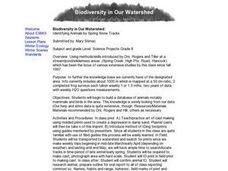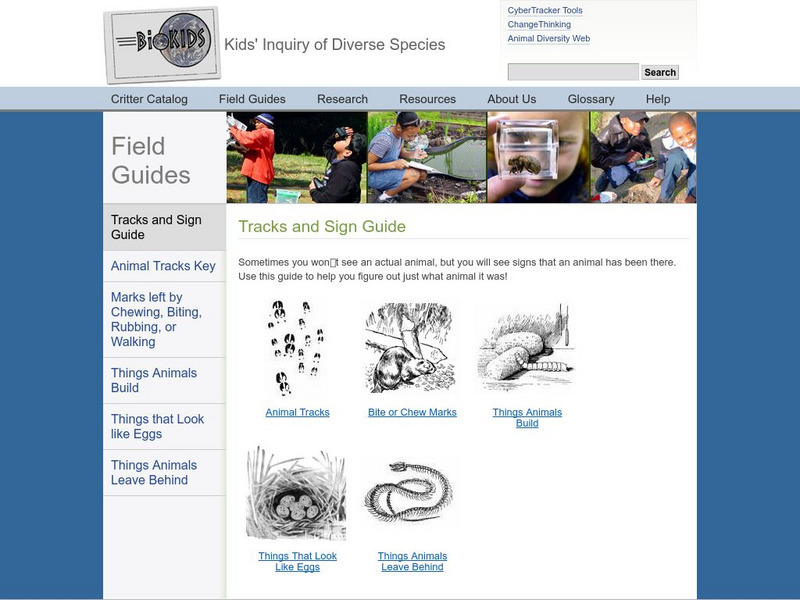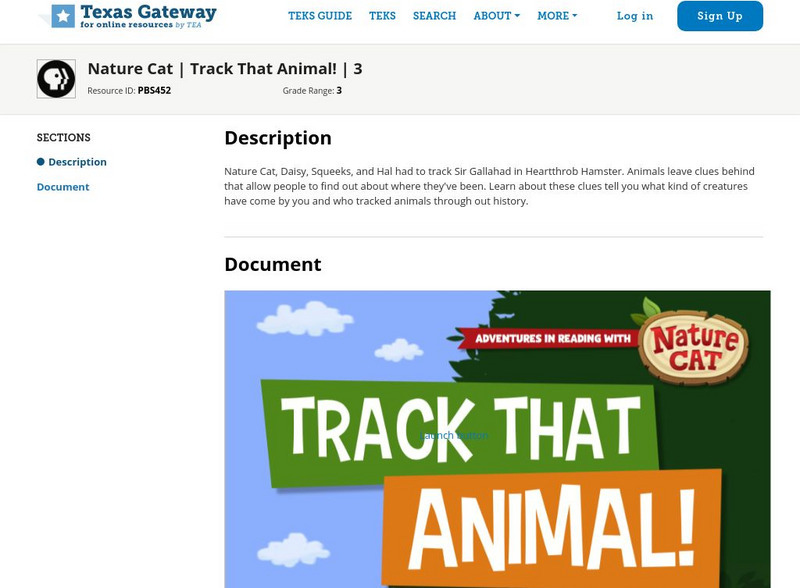Curated OER
Biodiversity in Our Watershed
Eighth graders create a database of animals and birds in the area in which they live. They use molded prints to make a cast of an imprint from a specific animal. They identify and research animals and prepare an outline for an oral...
Curated OER
The Story that Tracks Tell
Eighth graders observe and investigate animal tracks. They draw prints for local animals and switch with another student to guess the animal, identify animal tracks in a nearby wood lot, create plaster casts of the tracks, and write a...
Curated OER
Fossil Footsteps
Fourth graders create their own dinosaur tracks using clay. In addition, 4th graders compose a story about the dinosaur / animal who created the tracks. They study photographs of dinosaur tracks before beginning.
Unite for Literacy
Unite for Literacy: Animals: Who Walked Here?
Try to guess which animal left tracks on the ground. Includes audio narration in English, Spanish and Turkish, with text in English.
University of Michigan
University of Michigan: Animal Sign Guide
Use this guide to help you identify signs from different animals in the wilderness. Identify tracks, chew marks, signs from animals that build, eggs, and the like.
Environmental Education for Kids
Eek!: Follow That Footprint
Have you ever investigated all of those foot prints in the snow? Learn how to track the various creatures in your back yard with this guide.
US Geological Survey
U.s. Geological Survey: Save Animal Tracks as Plaster Casts
Engage students in the outdoors by searching for fresh animal tracks and making molds of them. Then investigate which animal might have been there.
US Fish and Wildlife Service
U.s. Fish and Wildlife Service: Wetlands, Marshes, Tracks in the Mud
This resource presents information about wetland ecosystems and the importance of habitat conservation in this resource and then try an interactive activity to identify tracks of wetland animals.
Texas Education Agency
Texas Gateway: Nature Cat: Track That Animal!: Grade 3
Nature Cat, Daisy, Squeeks, and Hal had to track Sir Gallahad in Heartthrob Hamster. Animals leave clues behind that allow people to find out about where they've been. Learn about these clues tell you what kind of creatures have come by...
Alabama Learning Exchange
Alex: Making Tracks
This lesson will allow students to explain or interpret possible scenarios from a single set of observations. Emphasis should be on supporting interpretations with concrete observations.
Other
Old Farmer's Almanac: Pictures of Common Animal Footprints
Use this website to learn how to identify animal tracks and view pictures of the tracks left by sixteen different animals.
PBS
Peep and the Big Wide World: Animals and Plants
This learning game has students follow different animal tracks and collect berries along the way.
Environmental Education for Kids
Eek!: Teacher Resources: Tracks!
This is an outdoor activity where students look for animal tracks and try to identify the animal. They can also make plaster casts of tracks and collect other evidence of an animal's presence.
PBS
Pbs Learning Media: Investigating Animals Packet: Pre K and K: Summer of Possibilities
Use these animal-themed activity sheets to allow children to choose their own learning adventures while investigating animals.
PBS
Pbs Teachers:namib: The Sidewinder and the Sidewinder
Define the concept of parallelism using the Sidewinder of the desert Southwest and the Sidewinder of the Namib. Illustrate the tracks left by the unusual adaptation of the Sidewinder of the Namib.
BBC
Bbc: Animal Field Guides
Can you identify animal tracks, animal droppings, nests and homes? Use this excellent resource to help you learn.













